Compare Mobile Prepaid Plan providers in New Zealand at Canstar Blue. Skinny, Kogan Mobile, 2degrees, Warehouse Mobile, Spark and One NZ were compared on Overall Satisfaction, Accessibility of Provider, Billing, Customer Service, Network Coverage and Value for Money.
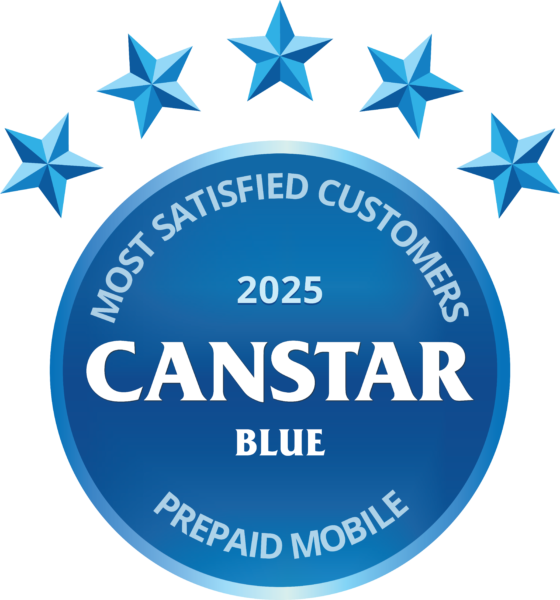
The nation’s phone users rate Skinny the No.1 choice for prepaid mobile for the tenth year in a row.
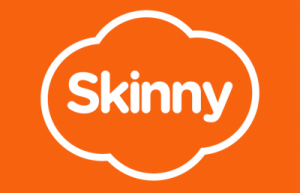
Our review compares prepaid providers on customer satisfaction, so you can discover what other Kiwis think about our compared prepaid providers before you sign on with one of them. Think of it like asking hundreds of your closest friends and family which prepaid provider they think is best!
Canstar Blue surveyed 1768 Kiwis who have an account with a prepaid mobile provider and asked for their feedback on their mobile provider.
Respondents rate their satisfaction with their prepaid providers from zero to ten, where zero is extremely dissatisfied and ten is extremely satisfied. Brand satisfaction was rated by respondents on the following criteria:
The winning brand is the one that receives the highest Overall Satisfaction rating once all the scores from the Overall Satisfaction criteria are combined and averaged.
Brands must have received at least 30 responses to be included, so not all brands available in the market have been compared in this survey. The brands rated in this survey are listed below in order of best overall satisfaction.
Find more information on our Most Satisfied Customer methodology.


Congratulations to Skinny for once again winning Canstar Blue’s Most Satisfied Customers | Prepaid Mobile Award. The award has been running since 2015, and Skinny has taken out top honours every year, which is a remarkable feat, given the competition in the prepaid mobile sector.
This year Skinny achieves another great set of ratings from its customers. It earns a top 5-Star rating for Overall Satisfaction, and further 5 Stars for Customer Service, Billing and Accessibility of Provider. Across all other categories it earns great 4-Star ratings.
Skinny Mobile is a division of Spark. However, instead of offering all the extras that Spark bundles with its plans, like free and half-price Spotify, Skinny concentrates on the basics – calls, texts and data – at a reduced price.
Skinny offers the following great-value prepaid plans. It also offers weekly plans, although they work out slightly more expensive:
The data, call and text allowances renew every 28 days.
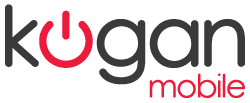
Australian brand Kogan Mobile achieves a great set of ratings from its customers. Notably, it’s the only prepaid mobile provider to earn 5 Stars for Value for Money, along with another top rating for Network Coverage.
Kogan earns 3 Stars for Customer Service, which is understandable given that Kogan Mobile is a web-based company.
Kogan was founded by entrepreneur Ruslan Kogan 25 years ago in Australia as an online own-brand electrical goods retailer. Since then it’s grown into a huge company, selling a wide range of products on its NZ and OZ websites.
Here in Aotearoa, it owns online retailer MightyApe.co.nz. However, despite its size, the Kogan Mobile brand is still a small player in the market. But it’s deserving of greater attention, because if you’re after a cheap, no-frills phone plan, Kogan Mobile’s pre-paid deals are some of the cheapest around.
It’s worth noting that while Kogan Mobile gets a 5-Star rating from its customers for Network Coverage it uses the same mobile network as One NZ, which only receives 3 Stars in the coverage category. This is because our awards are based on customer perception, rather than actual coverage. For more on the different mobile networks in NZ see below.
Kogan offers a discount if you pay for a 12-month plan upfront, as shown:

2degrees earns a mix of 3-, 4- and 5-Star ratings. Its highest ratings are for Customer Service and Accessibility of Provider, and its lowest are for Value for Money, Billing and Network Coverage, while it earns a great 4-Star score for Overall Satisfaction.
2degrees offers eight prepaid monthly plans, plus four two-week plans. And each, except the cheapest $8 monthly plan, comes with a great perk: a free hour of data each day to use at a time that suits your data needs:
NB: All plans offer unlimited calls to other 2degrees mobiles, hotspotting, free voicemail and are 5G ready.
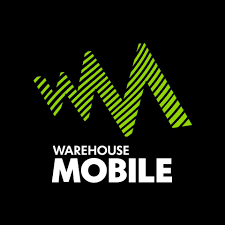
Warehouse Mobile earns predominantly great 4-Star ratings, plus a 3-Star rating for Network Coverage.
Warehouse mobile offers a range of five easy-on-the-pocket prepaid mobile plans. The ability to call beyond NZ and Australia makes them a great option for those who want to stay in touch with family and friends overseas. Warehouse mobile uses the 2degrees mobile network.
*Other destinations include standard landline or mobile numbers in: NZ, Australia, China, England, Scotland, Wales, the US, India, Canada, Germany, Israel, Puerto Rico, Brazil, Mexico, Malaysia, Singapore and South Korea. Exclusions apply including Alaska and Hawaii.

Spark scores predominantly 3-Star ratings, for Value for Money, Billing and Network Coverage. It earns its highest ratings for Customer Service and Overall Satisfaction (4 Stars) and Accessibility of Provider, for which it earns a top 5-Star rating.
That Spark scores less highly than Skinny in our ratings for Network Coverage, even though they share the same mobile network (see below), is indicative of consumer perceptions around the idea of value. Because Spark is a premium brand, consumers expect it to deliver a higher level of service and product quality than a no-frills provider, such as Skinny, which affects how they award their satisfaction ratings.
All of Spark’s prepaid plans come with a Spotify discount, and more expensive plans offer free Spotify data and Data Stack.
Data Stack: earn 100MB of data every 28 days when you stay on an eligible Spark Prepaid Value Pack, up to a maximum of 10GB. Unused Data Stack does not roll over.

One of NZ’s biggest telcos, and the operator of its own network, One NZ sits at the bottom of our table, earning mostly 3-Star Ratings, including for Overall Satisfaction, Value for Money and Customer Service. While not a top rating, 3 Stars still indicates that One NZ’s customers are content with their choice of telco.
One NZ’s MyFlex prepay plans allow you to customise your text, minutes, and data allocations. The plans below are default suggestions, provided by One NZ, but they can all be customised to better suit your needs. However, note that changing the mix of text/talk and data can alter pricing.
For example, reducing the text allowance on the $16 plan to 100 texts while increasing the data allowance to 1.25GB changes the price to $18.
All prices correct as of 26/06/2025. For further details, visit individual providers’ websites.
 Other prepaid providers
Other prepaid providersNot all mobile prepaid plan providers in the market qualify for our ratings (based on minimum survey sample size), but that doesn’t mean they’re not worth considering. Here are more providers to check out before making a decision.
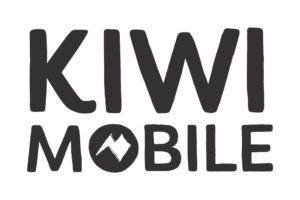
Kiwi Mobile’s two phone plans deliver unlimited data, capped at download speeds of of 1.2Mbps once you hit one of five data caps. The plans are unique because once you hit your data cap, if you don’t want your data speed slowed to 1.2Mbps, you can opt to move up to the next data tier. You can do this manually through the Kiwi Mobile app, or do it automatically. If you opt to increase your data limit, the daily cost of your plan rises accordingly for those days of additional data.
However, whatever data/price tier you end up on by the end of the month, when the next billing cycle comes around (there are 12 per calendar year), your plan automatically resets back down to your original plan.
| Data Tiers | Cost |
| 1GB | $0.59/day ($17.95/m) |
| 1.5GB | $0.89/day ($27.07/m) |
| 2GB | $1.19/day ($36.20/m) |
| 3GB | $1.49/day ($45.32/m) |
| 4GB | $1.79/day ($54.45/m) |
Kiwi Mobile’s Choice plan allows you to link up to four users. If there are two linked plans, both receive a discount of 15c per day, and if you link three or four plans that saving increases to 30c per day:
| Data Tiers | Cost for 1 Plan | Cost for 1/2 Plans | Cost for 3/4 Plans |
| 5GB | $1.30/day ($39.54/m) | $1.15/day ($34.98/m) | $1/day ($30.42/m) |
| 10GB | $1.60/day ($48.67/m) | $1.45/day ($44.10/m) | $1.30/day ($39.54/m) |
| 20GB | $1.90/day ($57.79/m) | $1.75/day ($53.23/m) | $1.60/day ($48.67/m) |
| 30GB | $2/day ($60.83/m) | $1.85/day ($56.27/m) | $1.70/day ($51.71/m) |
| 100GB | $2.10/day ($63.88/m) | $1.95/day ($59.31/m) | $1.80/day ($54.75/m) |
Each plan features:
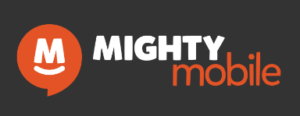 Mighty Mobile
Mighty MobileMighty Mobile is a pre-paid telco service from online retailer Mighty Ape. It piggybacks on the One NZ network, so offers premier coverage across the country. Like Rocket Mobile’s plans, Mighty Mobile’s point of difference is that the data speeds on its cheaper plans come already capped, albeit at speeds that still permit video streaming.
Mighty Mobile also has year-long plans that offer considerable discounts:
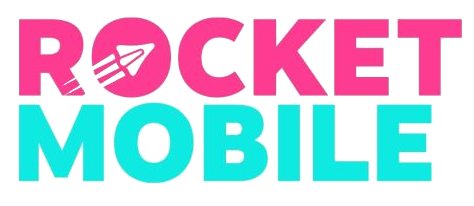 Rocket Mobile
Rocket MobileRocket Mobile is a mobile-phone provider that offers a unique range of prepaid unlimited data plans that use One NZ’s mobile network.
The majority of endless plans come with data caps. This means you only get a certain allocation of full-speed data. Once you hit your plan’s cap, data speeds are wound back quite dramatically, usually to around 1.2Mbps. And while 1.2Mbps is fast enough for streaming music and surfing the internet, it’s not suitable for video streaming or video calling.
What makes Rocket Mobile’s plans different is that the cheaper plans come with their max data speeds permanently capped, instead of their data limits. This means that if you don’t use your phone to watch a lot of video, you can get an unlimited data plan suitable for you needs for just $30 per month. And all Rocket’s other plans are quite fast enough to watch Netflix in HD!
| Plan | Data/Speed | Talk/Text | Hotspotting | Cost (monthly) |
| Rocket Starter | Unlimited: at 2Mbps | Unlimited NZ/OZ | 10GB | $30 |
| Rocket | Unlimited: at 10Mbps | Unlimited NZ/OZ | 20GB | $40 |
| Rocket Plus | Unlimited: at 40Mbps | Unlimited NZ/OZ | 20GB | $45 |
| Rocket Max (5G ready) | Unlimited: no speed cap | Unlimited NZ/OZ | 40GB | $70 |
All utilities – mobile, internet, power, electricity – only really come in one flavour: electricity is electricity, gas is gas, and access to a mobile service is pretty much the same whatever provider you use.
The only differences come down to the price and the associated packing of the phone products, for example value-added extras and customer service.
So it’s not surprising to see that for the overwhelming majority of phone users in our survey (36%), satisfaction with their provider comes down to one thing: Value for Money.
Customer Service (22%) is also important, rating only slightly higher than Network Coverage at 19%. As we mention above, perceptions of Network Coverage are interesting, as there are only three main mobile networks in the country, which are used by multiple phone providers (see below). And up until the roll-out of 5G, all three mobile phone networks were pretty consistent at delivering reliable coverage to around 98% of Kiwis. However, now that 5G is proliferating, big differences in ultrafast network coverage are appearing, as all three networks update to the latest 5G tech.
Here’s the full rundown of what the consumers in our survey say are the main things they consider when rating their prepaid providers.
 What mobile networks are there in NZ?
What mobile networks are there in NZ?There are three main mobile networks in the country, which were built by 2degrees, Spark and One NZ (formerly Vodafone). Although both 2degrees and Spark sold off their tower assets recently, they still use the networks they built.
In major centres, there’s very little difference between the three networks. However, in rural and remote areas coverage can vary dramatically. And then there’s 5G, which is more limited in its reach, even in major centres.
Here a rundown of the networks and which other providers use them:
Network reaches 97.5% of New Zealanders (with 4G at around 97%). Spark’s network coverage map can be found here.
Network covers over 98.5% of the population (with 4G at over 96%). One NZ’s network coverage map can be found here.
Network covers 98.5% of the places New Zealanders live and work (with 4G at over 96%). 2degrees’ network coverage map can be found here.
Prepaid phone plans are usually slightly cheaper than postpaid plans. However, if you’re going prepay, you need to be aware of billing cycles. 2degrees makes a big deal of the fact that, over a year, if you’re on its prepay, you only have to buy 12 top-ups – this is because each lasts a calendar month.
But other providers have different billing periods:
If you do the math, you can see different levels of value: 28 (days) x 12 (months)= 336. But there are 365 days in a year, meaning on Spark, Skinny, One NZ and Warehouse Mobile‘s prepaid plans, you’ll need to buy an extra pack to cover those missing 29 days.
However, Kogan’s packs renew every 31 days (31 x 12 = 372), delivering better value.
Prepaid plans are phone plans that require you to prepay for the telco service: i.e. you pay in advance for phone services to use within a set time period. Once that expiry period is over, you need to recharge your plan in order to continue your service. If you use up some of your data/text/talk allocations before the expiry period, you will need to either recharge your plan, wait until your next recharge (and not have certain services until then) or purchase an add-on for an additional cost, such as extra data, if applicable.
Postpaid plans differ in that you pay after using your phone plan allocations. Typically, you receive a monthly bill from your telco, usually on the same date, that you have to pay by a certain date. If you have used more than your plan’s inclusions, you can incur additional charges on your bill.
Over recent years the line between prepaid and postpaid mobile plans has blurred. Endless calls, texts and data and automatic monthly billing cycles are available across prepaid and postpaid, and some postpaid plans require payment midway through the billing period, making them, to some extent, prepaid.
Really the only difference is that if you’re not on a plan that offers unlimited calls, texts or data, a postpaid plan won’t leave you unable to make a call, send a text message, or use mobile data to chat online.
For if a prepaid plan expires, you need to spend extra money immediately to get your service back up and running. However, postpaid plans allow you to keep using your service, and simply settle the bill later.
This means that if you’re on a budget, prepaid may be the best option for keeping tabs on your spending. But when it comes to ease of use and maximum bang for your buck, it’s hard to look past postpaid plans.
 Bruce Pitchers is Canstar NZ’s Content Manager. An experienced finance reporter, he has three decades’ experience as a journalist and has worked for major media companies in Australia, the UK and NZ, including ACP, Are Media, Bauer Media Group, Fairfax, Pacific Magazines, News Corp and TVNZ. As a freelancer, he has worked for The Australian Financial Review, the NZ Financial Markets Authority and major banks and investment companies on both sides of the Tasman.
Bruce Pitchers is Canstar NZ’s Content Manager. An experienced finance reporter, he has three decades’ experience as a journalist and has worked for major media companies in Australia, the UK and NZ, including ACP, Are Media, Bauer Media Group, Fairfax, Pacific Magazines, News Corp and TVNZ. As a freelancer, he has worked for The Australian Financial Review, the NZ Financial Markets Authority and major banks and investment companies on both sides of the Tasman.
In his role at Canstar, he has been a regular commentator in the NZ media, including on the Driven, Stuff and One Roof websites, the NZ Herald, Radio NZ, and Newstalk ZB.
Away from Canstar, Bruce creates puzzles for magazines and newspapers, including Woman’s Day and New Idea. He is also the co-author of the murder-mystery book 5 Minute Murder.
Use apps to communicate with others, rather than traditional calls and texts: 65%
Access internet mainly through phone: 51%
Use phone to arrange everyday finances: 51%
Have switched mobile providers to get better value for money: 18%
Data cap is the major consideration when choosing phone plan: 15%
Regularly use a card loaded onto phone to make contactless payments: 21%
Have unlimited data: 18%
If you’re looking at switching from your current prepaid plan to another prepaid plan with the same provider, usually it’s fairly easy to switch. If you don’t have automatic recharge enabled on your plan, and you manually choose your recharge value each time the plan expires, it could be as simple as choosing a different recharge amount.
However, if this isn’t an option for you to do yourself through your account, or if you have automatic recharge enabled, you’ll need to get in touch with your provider to discuss your options for switching to a different plan.
For anyone looking to switch from one prepaid telco to another telco, you’ll need to cancel your current plan and sign up to a new plan with your new provider. If you want to keep your mobile phone number, you’ll need to port your number to your new provider. While your new provider will do the work for you, you need to make sure that you sign up to your new phone plan first, and don’t cancel your current plan until your number has been ported.
If you want to switch to a prepaid plan from a postpaid plan or other plan type, you’ll need to follow the same steps as you would switching from one prepaid provider to another. Decide if you want to keep your current mobile number, and then take the necessary steps for porting your number and switching telcos.
Signing up to a prepaid plan can be super simple, especially if you’re using the new phone number provided. You can even buy a SIM card in supermarkets and simply follow the steps to activate your prepaid SIM yourself.
This depends on whether your prepaid service is active or inactive. If you have an active prepaid plan, you can continue to recharge your plan for as long as you want. Some telcos change their plans or recharge options, in which case, you might be moved from your existing plan to a new plan, or the telco could allow you to stay on your existing plan.
If you choose to not recharge your plan when your expiry period is over, your account will eventually be deactivated. How long this takes varies between telcos, so it’s a good idea to check if you plan to leave your account inactive, because you could lose your number and go through the process of opening a new account.
Cancelling your prepaid plan is rather simple. If you don’t have automatic recharge set up on your prepaid plan, you can simply choose to not recharge your plan when it expires. Depending on the telco, if your account is inactive and you don’t recharge it within a set amount of time, the account will typically be deactivated, which can mean you lose your phone number, unless you have already moved your number to another service.
In the case of prepaid plans with automatic recharge, you may need to get in touch with your telco to request your plan be cancelled and the automatic recharge disabled. If you’re unsure how to go about cancelling your plan, it’s best to get in touch with your telco to learn of your options.
SIM-only plans are plans that come with a SIM card only and no phone or device included on the plan. Prepaid plans are typically SIM-only plans as you’ll usually buy just the SIM card and have no phone included on the plan. SIM-only plans can also be postpaid, the key being that you’re paying just for the SIM card and plan, no device.
If you want a new phone with your prepaid plan, you’ll need to buy your phone outright, as prepaid typically doesn’t include a phone that you pay off in instalments. If you’re looking for a phone on a plan, you’ll usually need to sign up to a postpaid phone plan for this option.
The past winners from Canstar Blue’s Prepaid Mobile ratings:
Canstar Blue surveyed 5037 New Zealand consumers across a range of categories to measure and track customer satisfaction, via ISO 26362 accredited research panels managed by Qualtrics. The outcomes reported are the results from respondents who have a prepaid mobile account. In this case, 1768 New Zealanders. Brands must have received at least 30 responses to be included. Results are comparative and it should be noted that brands receiving three stars have still achieved a satisfaction measure of at least six out of 10. Not all brands available in the market have been compared in this survey. The ratings table is first sorted by star ratings and then by mean overall satisfaction. A rated brand may receive a ‘N/A’ (Not Applicable) rating if it does not receive the minimum number of responses for that criterion.

Best-rated Monthly Mobile Plans - October 6th
Below we cover the best deals from mobile phone providers across prepaid and monthly plans. The award we think delivers the best value is our Deal of the Month!
Deal of the Month: Kiwi Mobile
For new …

Best-rated Prepaid Mobile - October 6th
Below we cover the best deals from broadband providers across fibre and wireless plans. The award we think delivers the best value is our Deal of the Month!
Deal of the Month: Mercury
Mercury is offering six …

Best-rated Monthly Mobile Plans - September 10th
Streaming TV services have taken over. Where once Netflix stood alone, countless more have joined. Apple TV+, Disney+, Neon, Prime Video, and even TVNZ+ have all become strong competitors, fighting for a share of our …
– Read more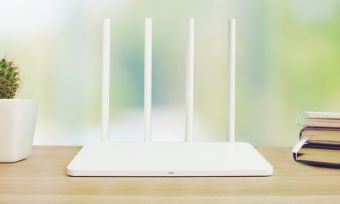
Best-rated Monthly Mobile Plans - September 3rd
If you’re on the hunt for a cheap broadband internet plan, what should you look out for? Compare providers with Canstar Blue.
– Read more
Best-rated Monthly Mobile Plans - September 3rd
Below is a round-up of the current mobile plans costing $50 per month and below (all figures correct as of 03/09/25).
Or, if you’d rather get an overview of the best endless data plans, regardless of …
– Read more